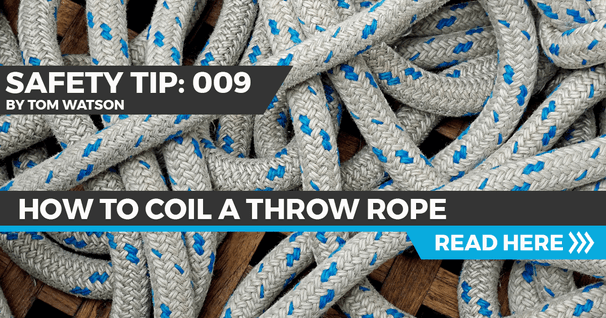Required and Recommended Equipment for Paddlers
Required Equipment for Paddlers
Paddlers often wonder what equipment they are required to have on board. I think it is useful to first understand that unless being used in a swim, beach or surf area, just about anything that can be used for transportation on the water is considered a vessel. As vessels, paddle craft will have to comply with the equipment carriage laws. I will go over the federal requirements and caution you that some states may have laws that differ. I am presenting this in lay terms to keep things simple.
First and most importantly paddlers will need to have a properly sized life jacket in good condition on board. If your state doesn’t require it to be worn, it is certainly recommended.
Because under the Navigation Rules paddle craft are vessels, you’ll need a sound producing device like a referee’s whistle or a canned air horn. Keep it close at hand.
If you operate at night, periods of darkness or reduced visibility like rain or fog, you’ll need navigation lights that comply with the law.
If you operate at night in certain areas, you’ll be required to have flares.
A few states require paddle craft to be registered. If that’s the case make sure your paddle craft is marked correctly and that you have your registration card with you. There may be other applicable state or waterway specific laws, so be sure to read up on those.
>>Grab a USCG If-Found Sticker for your vessel
That’s about it for paddlers. There’s really not much in terms of the required equipment. There’s a whole lot more that is recommended depending upon where you paddle.
Recommended Equipment for Paddlers
Someone operating on a farm pond might not need much more than the required equipment. Those who operate in remote backwaters, on big water or offshore may want quite a bit more equipment. Most of the additional equipment can be lumped into three broad categories: Safety, survival and signaling. These are things you will want if you become stranded in a remote location or get separated from your craft and are adrift. Keep your kit immediately available and in a float free location if practical.
Most paddlers will need some kind of communication device. Cell phones, handheld VHF radios and PLBs or EPIRBS are the most common. A strong word of caution here. If you are going to rely on a cell phone for emergency communication, you simply must protect it. The events that precipitate our need for assistance most often find us and our belongings wet. Check out waterproof cases for your cell phone.
Let’s touch on some of the more common signaling devices. Flares, signal mirrors, whistles, flashlights and glow sticks fit nicely into a ditch kit. SAR helos and airplanes often have night vision equipment. Any light at all really stands out when viewed through certain night vision equipment.
There’s a lot of overlap in safety and survival equipment. Consider adding these small, effective and affordable items to your kit. Sunscreen, lip balm, bug repellent and toilet paper aren’t true survival items, but they can certainly contribute to comfort in a survival situation. A basic first aid kit with some pain reliever is recommended. A multi-tool, lighter and some cordage will come in handy if you make it to shore.
>>Check out some kayak multi-tool options
There are several cross category items that can make a lifesaving difference. A silver emergency survival blanket and an orange bandana are two of them. The orange bandana may seem a bit odd, but they can be waved like a flag to signal. If you find yourself in the water they can protect your head from the sun and they make for a bright search target. They can even be used in first aid applications.
The survival blankets provide warmth and protection from the wind, sun and rain. They can be used to collect rain water and can even be used to pool condensation caused by your own breath. The bright silvery surface really stands out to searchers as well. They will trap your body heat, and for SAR responders that have heat detecting equipment, the heat signature can be picked up from miles away.
>>Grab a survival blanket here
There are a number of other paddling environments that may necessitate additional equipment. River paddlers will want a throw bag. Whitewater paddlers will want a helmet.
This is by no means a comprehensive list. It’s difficult to condense things down in a short write-up like this. Food and water are obviously critical survival items, but they don’t fit nicely into a ditch kit. Think about where you will paddle, what could go wrong and what you might want if something does go wrong. Be prepared, be safe and have fun.
Related Articles
Bracing provides support while leaning your kayak: 1) more aggressive boat handling during turns;…
Throw ropes are a critically important “life line” in certain rescue situations where approaching…
We're gonna take quick look at launching in surf. First thing we're gonna talk about is the ideal beach…
Whichever kayak you use, it should fit you. And fitting it out is a matter of adjusting, first, the foot…




